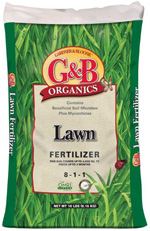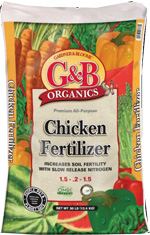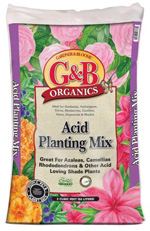|

    
 
|
 |
Featured Quote: "Winter is an etching, spring a watercolor, summer an oil painting and autumn a mosaic of them all." |

|
While the poinsettia remains the most popular of the holiday plants, a healthy Christmas cactus in full bloom is a great gift idea for that special gardener. It is easy to care for and can be grown indoors throughout the year. The flowers range in color from yellow, orange, red, salmon, pink, fuchsia and white or combinations of those colors. Its pendulous stems make it a great choice for hanging baskets. The "Christmas cactus" that is grown commercially is actually several closely related species of forest cacti that grow as epiphytes between 3,000 and 5,000 feet above sea level in the Organ Mountains north of Rio de Janeiro in southeast Brazil, South America. We typically think of cacti as being heat tolerant, but Christmas cactuses will keep their blossoms longer in cooler temperatures. It is important to keep plants in a well-lit location away from drafts of heater vents, fireplaces or other sources of hot air. Drafts and temperature extremes can cause the flower buds to drop from the plant before they have a chance to open. The Christmas cactus is a tropical type plant, not quite as drought tolerant as its desert relatives and, in fact, may drop flower buds if the soil gets too dry. Water thoroughly when the top inch or so of soil feels dry to the touch. The soil should be kept evenly moist for best growth. Christmas cactuses will do best in bright indirect light. They don't need to be fertilized while in bloom, but most gardeners enjoy the challenge of keeping the plant after the holidays for re-bloom the following year. While plants are actively growing, use a blooming houseplant-type fertilizer and apply monthly until blooms set the following season. If taken care of properly, a single plant can last for many years, providing many seasons of enjoyment. |
 |
|
Mistletoe, in older times, was believed to have protective properties and was hung to ward off evil spirits. Celts believed that mistletoe, a parasitic plant that grows on trees, had special powers that could heal diseases, make poisons harmless, protect against evil spells and bring fertility to childless women. For many years, Christian places of worship did not allow it inside because of its pagan associations. But nowadays it is mostly used as an excuse to steal a kiss. The origin of our tradition of kissing under the mistletoe is lost in the mists of antiquity. Some say it probably stemmed from the Druids, who considered it sacred and would declare a truce in an area where it grew. Others say the custom comes from the old festival of Saturnalia, and still others claim it comes from old Norse mythology and the tale of Baldur's death from a twig of mistletoe. Legend has it that the tears of his mother, Frigga, changed the berries of the mistletoe from red to white. Whatever the origin of the tradition, most consider it a good deal of light-hearted fun to steal a kiss under the mistletoe. Just be careful whom you kiss--a jealous spouse may be lurking. Despite its use as a holiday decoration and its association with love, peace, and stolen kisses, mistletoe is actually a parasite. It lives on trees and shrubs, tapping into the plant's nutrients by sending its roots under the bark. Mistletoe can weaken, or even kill, a plant. It is also poisonous (all parts), so keep it out of the reach of children and pets! |

|
December 12 is National Poinsettia Day, designated by Congress to honor the flower and Joel Robert Poinsett, botanist and the first United States Ambassador to Mexico. Native to Mexico, the poinsettia, with over 50 million sold annually, is the number one flowering potted plant sold in the United States. History of Poinsettias Montezuma, the last of the Aztec kings, would have poinsettias brought into what now is Mexico City by caravan because they could not be grown in the high altitude. During his stay in Mexico, he wandered the countryside looking for new plant species. In 1828 he found a beautiful shrub with large red flowers growing next to a road. He took cuttings from the plant and brought them back to his greenhouse in South Carolina. Even though Poinsett had a distinguished career as a US Congressman and Ambassador, he will always be best remembered for introducing the poinsettia into the United States. |
 |
|
One needn't be a professional gardener to appreciate a houseful of greenery. In fact, most of us are stumbling along, learning a bit more each day about the plants with which we share our lives. And in return for the pleasure of form and color they add to our living environments, not to mention the fresh oxygen they release into the air, we often are too eager to reciprocate by over-tending them.  Root rot in houseplants is most commonly caused by over-watering. When a plant wilts, our first instinct is to water it, but if it does not respond to watering, and the lower leaves begin to yellow and drop, these are sure signs of root rot. The roots need both water and oxygen, and if they are given too much water, the oxygen cannot reach the root. When first choosing your new plant, pick one with a healthy green color and which shows signs of new growth. Check the bottom of the pot to ensure that the plant is not root bound, and avoid plants with white or brown lumps on the leaves or stems. There is no one way to water all plants. Succulents have fleshy leaves and stems that enable them to store water, while plants with large or very thin leaves usually require more frequent watering. If you're planting in clay pots, remember that they are more porous, thus water evaporates rapidly from the sides. Plants placed in glazed or plastic pots will require less water. Plants in warm, dry, sunny locations need more frequent watering than those in cool, low-light environments. A large plant in a small pot needs more water than a small plant in a large pot. And after rewarding you with a flush of flowering, plants may slow in growth and become dormant, hence needing less water. Here's an easy way to tell if your houseplants are thirsty; insert your finger into the soil up to the first joint--if it is dry, time to water. Rap your knuckles against the side of the pot; if the sound is dull, the soil is moist; if the sound is hollow, time to water. Look closely at the soil of your plant; if it is lightening in color, time to water. And lift up the pot; as the potting mixture dries, the plant lightens in weight. Of course, choosing easy-to-care plants is the most efficacious manner of filling your home with the outdoors. We have a variety of easy-to-care-for plants that are wildly different visually, but which all provide the sense of nature that we strive for when filling our homes with plants. |
 |
|
By Tamara Galbraith It's not the heat...it's the humidity. You've heard it a thousand times, right? But for plants brought inside for the winter, the saying is especially true. Most plants thrive in 80% relative humidity. The average home's winter humidity level is a pretty desert-like 20-60%. So you know plants are suffering. Fortunately, there are some easy ways to raise humidity around your plants. Humidifiers are wonderful additions to any household, and a benefit to humans as well as plants. There are both cold mist and heating humidifiers, and they work as their name implies: one sends a cool mist into the atmosphere, while the other heats the water and shoots warm vapor into the air...an especially nice treat for both tropical plants and folks suffering with the flu. One of the most popular methods is to use a pebble tray. Fill a drainage saucer with small pebbles or rocks. Fill the saucer with water to just below the top of the rocks. Put your container on top. Over time, the water will evaporate and increase the humidity around the plant. You can also group plants closely together to build up the humidity in one area. Two big don'ts: Don't place plants near outside doors where they will get frequent blasts of chilly air, and don't place them near furnace output vents, where they will dry out faster than you can say "Mojave Desert." |
 |
|
Question: Answer: As long as the entrance/hole is a proper size and the birdhouse has ventilation openings without letting in rain, the birds will be happy. Unfortunately many bird houses not approved by the National Audubon Society (usually the small, painted "cute" looking ones) have no ventilation. The birds nest, lay eggs, the eggs hatch, and then the babies die because they overheat. You don't want to make the birds "comfortable" by adding stuff for the birds to nest in, because the house will then smell like a human and the birds won't want to nest. They're quite content to find everything they need to build a comfy nest inside all on their own. Happy Birding! |
 |
|
What You'll Need:
Step by Step: Directions here
|
 click here for a printer friendly version of this page
click here for a printer friendly version of this page
 |
Written content © Garden Partners LLC, or respective authors. All Rights Reserved. Privacy Policy. All written content contained in this site is protected by United States copyright law and may not be reproduced, distributed, transmitted, displayed, published, or broadcast without prior written permission of Garden Partners, LLC. You may not alter or remove any trademark, copyright or other notice from copies of the content. |



 Centuries later, Joel Roberts Poinsett became the first United States Ambassador to Mexico, being appointed by President Andrew Jackson in the 1820's; because of his interest in botany he introduced the American elm into Mexico.
Centuries later, Joel Roberts Poinsett became the first United States Ambassador to Mexico, being appointed by President Andrew Jackson in the 1820's; because of his interest in botany he introduced the American elm into Mexico. 